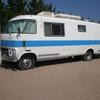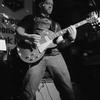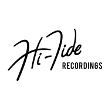ncgalt1984

Joined: Nov 27, 2013
Posts: 235
Greenville, NC



|

Posted on Mar 25 2014 12:44 PM
Good afternoon,
I did a search and couldn't find anything on this specific question so please forgive me if this is a re-post. We played a gig this weekend that, while rushed, went well. There were several bands back-to-back and, since we weren't micing our amps or drums, didn't use a sound guy. People seemed to enjoy our show but several said the bass was exceptionally loud and that the drums were hard to hear. I was standing in front of my Twin, which was cranked, so I had no way of really assessing what it would sound like out front.
We had tried to set our volumes before we left for the show because we knew there would be little to no time to get set up (9 bands played in 7 hours) so we were anticipating that we wouldn't have time for a sound check. Everything "seemed" balanced in the drummer's living room but that didn't translate to the acoustics of the venue very well.
Most of the gigs we play around Greenville will probably be similar in that there won't be a sound man to dial everything in for us. I'm wondering if anyone has experience using a sound meter/decibel meter to set the volume of instruments when playing with a drummer that isn't miced. Is that a potential solution for setting the bass and guitar amps to appropriate levels so as to not drown out the drums (for live performance and/or recording).
Sorry if this is a dumb question but I have so much going on when we play (my gear, running samples, playing, dealing with lights/video) that I'd really like to find the simplest solutions to getting set up. It seems that a decibel meter might be a solution. Has anyone tried this? Would you set everyone to the exact same level or have the guitar slightly higher since it is the "lead" (and by how much)?
Thanks,
Kevin
— Kevin
The Out of Limits
www.facebook.com/theoutoflimitsband
https://theoutoflimits.bandcamp.com/
Last edited: Mar 25, 2014 12:46:25
|
DannySnyder

Joined: Mar 02, 2006
Posts: 11076
Berkeley, CA











|

Posted on Mar 25 2014 12:46 PM
I usually single out someone I know in the audience before I start and ask them to let me know if we need to adjust anything.
— Danny Snyder
"With great reverb comes great responsibility" - Uncle Leo
I am now playing trumpet with Prince Buster tribute band 'Balzac'
Playing keys and guitar with Combo Tezeta
Formerly a guitarist in The TomorrowMen and Meshugga Beach Party
Latest surf project - Now That's What I Call SURF
|
artdecade

Joined: Aug 30, 2012
Posts: 399
Twangsville


|

Posted on Mar 25 2014 12:52 PM
^ Danny is spot on here. If you can't get a proper setup, have someone you know and trust give you some signals. You can make make adjustments on the fly.
— To Boldly go where no Tiki has gone before...
|
JakeDobner

Joined: Feb 26, 2006
Posts: 12159
Seattle



|

Posted on Mar 25 2014 12:54 PM
We had a limiting factor, our main guitarists Tremolux. We learned, in our practice studio, where our amps needed to be to not be louder than his amp. With a live gig, we dialed in at the same volumes.
I can only remember two-three gigs where we weren't cramped on stage, we were a five piece that carried gear for a six-piece.
We always got our amps behind our drummer slightly and angled the amps inward slightly.
|
ncgalt1984

Joined: Nov 27, 2013
Posts: 235
Greenville, NC



|

Posted on Mar 25 2014 01:09 PM
Maybe my ambitions are bigger than my abilities will permit. The way we try to play a set is to basically start playing and roll right from one song into the next, joined occasionally by samples or by just kicking the next song off. Once we start it's just a flurry till we finish, usually about 17-18 songs in 45 min set. I'm trying to avoid dealing/interacting with the audience.
— Kevin
The Out of Limits
www.facebook.com/theoutoflimitsband
https://theoutoflimits.bandcamp.com/
|
killbabykill34

Joined: Apr 03, 2010
Posts: 3201
Jacksonville, AL






|

Posted on Mar 25 2014 01:10 PM
I wish the limiting factors worked for our band. I have long hoped that our Keyboard players limited wattage would inspire everyone in the band to adjust. Sadly, we have a bass player that continues to purchase more and more power and refuses to come down. It is a crap shoot whether our volume will be tolerable from night to night.
Thankfully, he just upgraded from a 70's V-4, which he cranked to get the dirty tone he likes, to a Bassman 300, which should offer more adjustment. He is also moving to a fuzz pedal to get his dirt. Time will tell.
— THE KBK ... This is the last known signal. We offer Sanctuary.
www.thekbk.com
http://www.deepeddy.net/artists/thekbk/
www.reverbnation.com/thekbk
www.facebook.com/thekbkal
Last edited: Mar 25, 2014 13:11:37
|
DannySnyder

Joined: Mar 02, 2006
Posts: 11076
Berkeley, CA











|

Posted on Mar 25 2014 01:12 PM
ncgalt1984 wrote:
Maybe my ambitions are bigger than my abilities will permit. The way we try to play a set is to basically start playing and roll right from one song into the next, joined occasionally by samples or by just kicking the next song off. Once we start it's just a flurry till we finish, usually about 17-18 songs in 45 min set. I'm trying to avoid dealing/interacting with the audience.
Still not impossible. Just program a long sample after the first song and arrange for your friend to come up and advise you.
— Danny Snyder
"With great reverb comes great responsibility" - Uncle Leo
I am now playing trumpet with Prince Buster tribute band 'Balzac'
Playing keys and guitar with Combo Tezeta
Formerly a guitarist in The TomorrowMen and Meshugga Beach Party
Latest surf project - Now That's What I Call SURF
|
JakeDobner

Joined: Feb 26, 2006
Posts: 12159
Seattle



|

Posted on Mar 25 2014 01:18 PM
Or just have the friend point to a member of the band and point upwards or downwards.
Also, very cool about the rolling from song to song. We do a similar thing but we do it in chunks of 3-4 songs at a time. No samples or anything. 45 and 17-18 songs is way too much for an audience, in our opinion. We always want to leave the audience wanting more. Audience fatigue is a real thing, no matter how great the bands are.
|
killbabykill34

Joined: Apr 03, 2010
Posts: 3201
Jacksonville, AL






|

Posted on Mar 25 2014 01:33 PM
JakeDobner wrote:
Or just have the friend point to a member of the band and point upwards or downwards.
Also, very cool about the rolling from song to song. We do a similar thing but we do it in chunks of 3-4 songs at a time. No samples or anything. 45 and 17-18 songs is way too much for an audience, in our opinion. We always want to leave the audience wanting more. Audience fatigue is a real thing, no matter how great the bands are.
I agree with Jake on this one. 30 minutes is a VERY good set. Unless you are doing a multi-set, single band show. But when it comes to multi-band show, get on, rock hard, finish.
— THE KBK ... This is the last known signal. We offer Sanctuary.
www.thekbk.com
http://www.deepeddy.net/artists/thekbk/
www.reverbnation.com/thekbk
www.facebook.com/thekbkal
|
Badger

Joined: Nov 16, 2013
Posts: 4537
Wisconsin







|

Posted on Mar 25 2014 01:41 PM
I would second the advice to - at least for a few gigs - have someone along, on purpose, that you trust with knowing your sound. Days gone by my wife actually was quite good at this, using the pointing described above (and would even semi- "take over" the board at a jam when we were up). But even with no board after awhile, in similar venues, the same "culprits" will show up and you'll get a sense of what needs to be done in the real world so that real drastic adjustments aren't necessarily. When you get it right at the gig (indoor low-ceiling, indoor high vaulted, outdoors on a flat-bed, etc.) you can make some quick notes on where everyone ended up to actually get it right live vs. your rehearsal settings.
Even an early sound-check at the gig is often dissimilar to what happens when the place fills up... and there's liquor involved.
— Wes
SoCal ex-pat with a snow shovel
DISCLAIMER: The above is opinion/suggestion only & should not be used for mission planning/navigation, tweaking of instruments, beverage selection, or wardrobe choices.
|
RobC

Joined: Oct 11, 2010
Posts: 152
Bainbridge Island, Washington


|

Posted on Mar 25 2014 02:15 PM
We use a PA so everyone is mic'd and goes through the board. I am the defacto on stage sound guy but I have a 25 foot long chord that allows me to walk out into the audience and listen.
The amps are all pointed sideways on stage for monitors without blowing out the audience (ice pick is very real if the amps are pointed up and out) so we can hear each other. Bass cab goes behind the drummer.
Without a PA it is critical that you not only identify a friend to give you feedback but give him permission to adjust the amps on stage. it only takes a few seconds and by the end of the first song everyone is dialed in.
the 0ther trick I learned for the over-exuberant guitarist is to get an amp stand and put it right behind his head. That way he hears what the audience hears. All you guitarist know it sound good when the sound is blowing by your feet but the audience is taking a serious beating right in front of the amp.
Bottom line: Good friend with a good ear authorized to adjust volumes on the fly.
|
ncgalt1984

Joined: Nov 27, 2013
Posts: 235
Greenville, NC



|

Posted on Mar 25 2014 02:59 PM
Thanks everyone. I may need to rethink some things. My background is in Bluegrass/acoustic which is generally done in 45-50 sets (10-11 songs) which includes 5 minutes of retuning and 5 minutes of banter with 10 mins between sets. That's a pretty typical format around here so my idea was to do something different. I've just defaulted to thinking in terms of an hour set, which for shorter instro songs means about 18 songs per set.
There really aren't any venues around here that do the multiple band thing because they don't want to pay several bands. It's pretty common for my other band to get hired to play 2-4 hours (some won't hire you unless you can play at least 3 hours).
— Kevin
The Out of Limits
www.facebook.com/theoutoflimitsband
https://theoutoflimits.bandcamp.com/
Last edited: Mar 25, 2014 15:24:38
|
killbabykill34

Joined: Apr 03, 2010
Posts: 3201
Jacksonville, AL






|

Posted on Mar 25 2014 04:04 PM
The set length thing is really tricky and varies with audiences. Like bluegrass, many times you will be playing to a seasoned genre audience. These people tend to have a longer attention span. But when playing with multiple bands, it is always a good idea to limit your length and just play a VERY strong set, while leaving them wanting more.
— THE KBK ... This is the last known signal. We offer Sanctuary.
www.thekbk.com
http://www.deepeddy.net/artists/thekbk/
www.reverbnation.com/thekbk
www.facebook.com/thekbkal
|
revmike

Joined: Feb 26, 2006
Posts: 3854
North Atlantic








|

Posted on Mar 25 2014 07:32 PM
I think the volume thing gets easier the more shows you play. We do a mix of miked and unmiked shows, and have gotten to the point where it becomes more obvious. The long chord and walk off the stage to check is a good idea, as is walking around the stage to see if you can hear everything. Since monitoring is hit and miss, we always place our amps behind the drummer ( on each side), and angle them slightly inward. For us, a 45-50 minute set is ideal. The set list is more or less a guide at this point, with a lot of changes in tunes, and song lengths based on the mood of the audience. Our moto is keep them on the dance floor. This will often involve extending a song, replacing a slow tune that is next in the set with a danceable one, and minimizing the space between the songs.
Rev
— Canadian Surf
http://www.urbansurfkings.com/
|
OzReverb

Joined: Apr 28, 2009
Posts: 460
Victoria







|

Posted on Mar 29 2014 12:00 AM
We usually do our own sound and have had approx 2 gigs in 4 years where a sound person has got it right. About 90% of our gigs we don't bother micing up or using foldback/monitors. Usually when I'm reassured with 'hey the sound guy can mix anything' line by the venue I get nervous.
Amps slightly behind the drummer, facing slightly inwards, about 2-4 foot off the floor (4-piece). Lead guitar needs to hear themselves to make it work, so is about 20-20% louder than the other stringed instruments. Job done.
— https://www.facebook.com/lostremoleros/
Last edited: Mar 29, 2014 00:01:28
|
Melvin_Udall

Joined: Mar 13, 2014
Posts: 21
Thessaloniki


|

Posted on Mar 31 2014 10:10 AM
The topic that is issued by ncgalt1984 is very important. Unfortunatelly not so many musicians pay attention to it. I am not saying that I know the answer but after pleying many gigs without a sound engineer, here is my two cents:
First of all, everyone in the band has to realise that what matters is the band and not the individual. The whole result has to be good. Most musicians claim that they "cannot hear themselves" and crank their volumes up. This results to further complaints by the other members who also crank theirselves up and the final result is a chaotic loud mess, with the drummer hitting everything in order to be heard (especially the bass drum). Thus damaging not only the result but himself as well. Learn to be able to distinguish your instrument and not have to crank it up.
You have to understand that the audience enjoys a good sound result and you haven't got to be loud for that. Even subliminaly any audience will prefer a well adjusted sound, than a loud mess.
Now that I have made clear that the main source of the problem is the band itself, here are some advices on how to set your sound.
- Begin with the drummer. Set the volumes according to his volume. Cause he is not miced. You may need to set only one mic at least for the bass drum, which is important for the result, himself and especially the bassist. The bass drum is prone to "get lost" in the final result.
- Be aware that certain instruments (ie the rythmn guitar) has to be lower. During the soundcheck, check various places in the venue for the sound. Hear if it is good. DO NOT secretly change any settings during the show. Even if the result is good and you cannot hear yourself, you have to learn to go with it.
- Keep in mind that especially indoors venues mean that you will have different sound than the one you had in the check. Cause there will be people's bodies and the reflections of the sound waves will differ. So you may need to be a little more loud in the check.
- Have some time to place your amps right. For example, if the speaker of your amp is not even a bit directed to the drummer, he won't hear you. But the guy who drinks his beer in front of you, will hear you too loud. Place your amps in the right angles.
Generally do not pay attention to your friend's advices. They are your friends who mostly have no idea about sound. They like you and will like whatever you play. Have someone who knows about sound to advise you. Pay attention to what strangers say. Especially strangers who do not like you.
You mention that you had your twin cranked up. This is TOO LOUD. I use a deluxe reverb (less watts) and I set it usually at 4 in indoor gigs full of people without a mic.
Last but not least, there is a group of people who believe that "loud is better". That "this is how music becomes alive". That "it is rocknroll and that is how it should sound: loud". If you believe that, do not pay attention to whatever I mentioned. Keep cranking your volumes up and making people dislike you. Yes, Dick Dale used to crank his volumes up and destroy fender combos, but you ain't Dick Dale.
Sorry for the long post, I hope I helped.
— Surf Rock from the Northern Greece seas
http://meanwhileinmexico.gr/
|
jdmcduders

Joined: Jan 14, 2013
Posts: 140
Indianapolis, IN

|

Posted on Mar 31 2014 12:30 PM
Most places we play do not have much or any PA so we've gotten decent at knowing where to set things. I also put my amp on a stand so it's easier to hear and not aimed at my knees. Its usually easy for me and the other guys to hear it without just blasting.
|
ncgalt1984

Joined: Nov 27, 2013
Posts: 235
Greenville, NC



|

Posted on Mar 31 2014 03:23 PM
Since folks are still commenting on this thread I'll follow-up. We got together last Tuesday to practice. I purchased a new video camera so we decided to try some recording. The reason I am sharing these here is because we set our levels using a decibel meter. I placed the meter beside the camera and had the drummer play. He registered 91-93 db from where I was standing. We then set the bass and guitar to the same level. We then turned the camera on and started recording. Overall, I'd say they are pretty well mixed considering it's just a little camcorder in the drummer's living room.
http://youtu.be/CtNUYU4hztk (The Secret Saucer)
http://youtu.be/aJMqxiuIQRE (Tzar Bomba)
http://youtu.be/TDudBaODNWE (A Boy and His Dog)
http://youtu.be/NEf7DHwihPE (Walking Out In His Body)
— Kevin
The Out of Limits
www.facebook.com/theoutoflimitsband
https://theoutoflimits.bandcamp.com/
|
djangodeadman

Joined: Jan 25, 2007
Posts: 1568
Brighton UK




|

Posted on Mar 31 2014 06:06 PM
Ears (yours or someone else's) are much better tools for setting levels than a decibel meter.
— Los Fantasticos
|
RobC

Joined: Oct 11, 2010
Posts: 152
Bainbridge Island, Washington


|

Posted on Mar 31 2014 06:45 PM
Unless you have gain control on the camera, it isn't going to work and the decibel meter just measures pressure not the sound of a room.
Caveat on my good friend with a good ear recommendation: Good musician friend who has played live. There are always a bunch of musicians at our gigs (small island) who I trust to give us good feedback.
I also tell the bar staff to chime in and in particular come talk to the bass player. We don't get pissed off and can pass the info onto the rest of the knuckleheads on stage.....
|






































